The Ken Kommandments: 10 Simple Things You Can Do to Pave the Way for Success
1.
Know Your Week
By default, we tend to only think long term about our biggest goals (i.e. 10, 5, 3 years down the road). This positions you perfectly for feeling overwhelmed and ultimately, failing. But when you flip that thinking on its head and break down your biggest goals on a weekly basis, they become actionable. To keep progressing, hone in on your week. There are 52 in a year, 13 in each quarter, and every weekend offers a break to reset.
Which week are you in right now? Seriously — know the number of the week you’re in for the quarter as well as the year, every week!
What’s the most important thing you can do this week that aligns with where you want to be?
2.
Think Big, Act Small
The most productive sweet-spot within a week is about 3 hours. 2-3 hours set aside weekly to labor towards your biggest goals (in the midst of everything else) will ensure you’re moving things forward. This principle is about chipping away, making progress, and creating small wins along the way. It’s the process that stimulates the progress that leads to the desired product.
Is what you’re working on this week, in your 2-3-hour window, in alignment with where you are going overall?
What is the win that can be achieved in your 2-3-hour time frame?
3.
None Of Us Are As Smart As All Of Us
When ego kicks into gear, many leaders think they can do it all. We get caught up in the daily grind and become resistant to asking for help, but realistically, our success depends on regularly checking in with others. Whether it’s seeking another perspective from above, laterally, or below, it just takes one shift in perception to create more clarity than an individual can realize on their own.
Ask a colleague what’s the MOST important thing he/she is currently working on. Then, restate it in your own words. You’ll a) be in a better position to assist them, and b) they may hear it in a different way, helping them gain a new perspective.
Which week are you in right now? Seriously — know the number of the week you’re in for the quarter as well as the year, every week!
What’s the most important thing you can do this week that aligns with where you want to be?
4.
What Gets Measured Gets Done
There must be an objective measure in place, or your efforts are being wasted. It can be leading or lagging, direct or indirect.
Measurement leads to goal achievement because 1) the desire to win is heightened when the pressures of time and rivalry coincide, even if you’re not competing against others but are competing against one’s own self or business competitors and 2) it provides a level of accountability (i.e. measuring your weight to achieve weight loss, measuring revenue monthly to ensure you’re bringing in money). We must be able to hold ourselves (or others) accountable for the resulting successes or failures.
If you’re not measuring it, why are you doing it?
5.
Remember Curly!

Remember the movie City Slickers? Take Curly’s advice: You can only focus on one thing at a time. If you have a big goal for this year and you’re applying all the above principles, then you’re giving your ‘one thing’ the attention it needs. If you try to focus on six big things in one week, the likelihood of failure is high — when you chase two chickens in a cage, you’ll catch none.
To gain traction, you must focus on one thing. It’s the snowball effect: you set aside time to complete one thing towards your biggest goal this week and once you knock that out, you’ll move onto the next ‘one thing’, taking you one step closer to the goal you aspire to achieve.
What is one win you can achieve this week that’s in alignment with your biggest goal?
6.
Be Brief, Be Bold, Be Gone
Harvard Business Review surveyed nearly 200 senior executives from a variety of industries. Only 17% of these leaders stated that their meetings are a productive use of group or individual time. They reported having too many meetings with no clear purpose, no desired outcomes, and loss of focus due to irrelevant or unclear conversations.
Daily meetings shouldn’t last more than 15-20 minutes, weekly meetings shouldn’t last more than 45, and monthly meetings shouldn’t last more than 2 hours. Be brief and purposeful about what you’re presenting or asking for, know your desired outcomes well in advance, be bold in stating what matters, then be gone.
What are the ground rules, formats, and guidelines for your meetings?
7.
See, Feel, Believe
You can envision your biggest goal, but can you feel it in your gut? Not a metaphorical feeling–rather a true physical sensation in your body that ties the mental and emotional pieces of your goal together. If you can physically feel the goal, then you’re in the position to believe and achieve.
If the feeling isn’t there, I would reevaluate what you’re doing and why — perhaps what you’re doing isn’t the right thing for you. If working towards your biggest goals isn’t inspiring you or giving you life, you may be on the wrong path.
What is your gut telling you about a specific goal?
8.
Eliminate ALL Other Options
There’s an old story about commitment. In 1519, Captain Hernan Cortes and six hundred of his men sailed to an unknown land. Cortez was determined to settle this land, so immediately upon arriving, he ordered his men to burn the ships. Two years later, he succeeded in his conquest of the Aztec empire. This is an example of true commitment, and how withdrawal is all too easy when you give yourself the option.
Planning an exit strategy is just a safety net. Cortés was on a mission, and he knew the only way to keep himself or his men from quitting was to take the option off the table. Often, leaders revert back to what they know because it’s easier. To be successful, you need to take challenges head-on, fully committed (eliminating deadweight, embracing new processes or operating frameworks, etc.). Change doesn’t have a chance of working if you’ve already mapped out the off-ramp. In business, you have a choice of either doing what you’ve committed to or not.
What are your ships? Have you burned them yet? What are you afraid to let go of?
9.
Communicate And Connect
We get stuck in silos of texts and emails, floating through daily life with our headphones on. We neglect to get in a room and talk with one another enough. What if you took the time to really connect with someone — venturing beyond just saying hi in the hallway?
You never know the value you could be giving (or getting) by simply connecting. We must communicate to truly connect. Once a connection is solidified, calls, emails, and texts can be utilized more often. But face-to-face interaction is imperative to build a strong element of trust, rapport, and connection.
Think of someone you’d like to build a stronger relationship with. Now, ask them to lunch or to have coffee. If time is an issue, think about ways that might help you connect the next time you run into each other.
10.
Be Infectious
Being infectious is about energy. It’s the law of attraction: if you give off negative energy, you will attract negative energy. If you give off positive energy by being passionate about what you do, being present, finding ways to pump others up, showing gratitude and grace, you will receive it in return.
What many don’t realize is that it’s a conscious choice, but if you can live by this principle, it has a multiplicative effect to others around you. You can’t help but feel good being around positive people. It positions you to do what you need to serve your employees and clients best.
Are you aware of what type of energy you radiate? Is it negative or positive?
The Takeaway: these guidelines will help you create an actionable blueprint to help you and your team pave the way for success. If you have the discipline to follow them, you will see results and be on the path to get others rallied around your vision, too.





